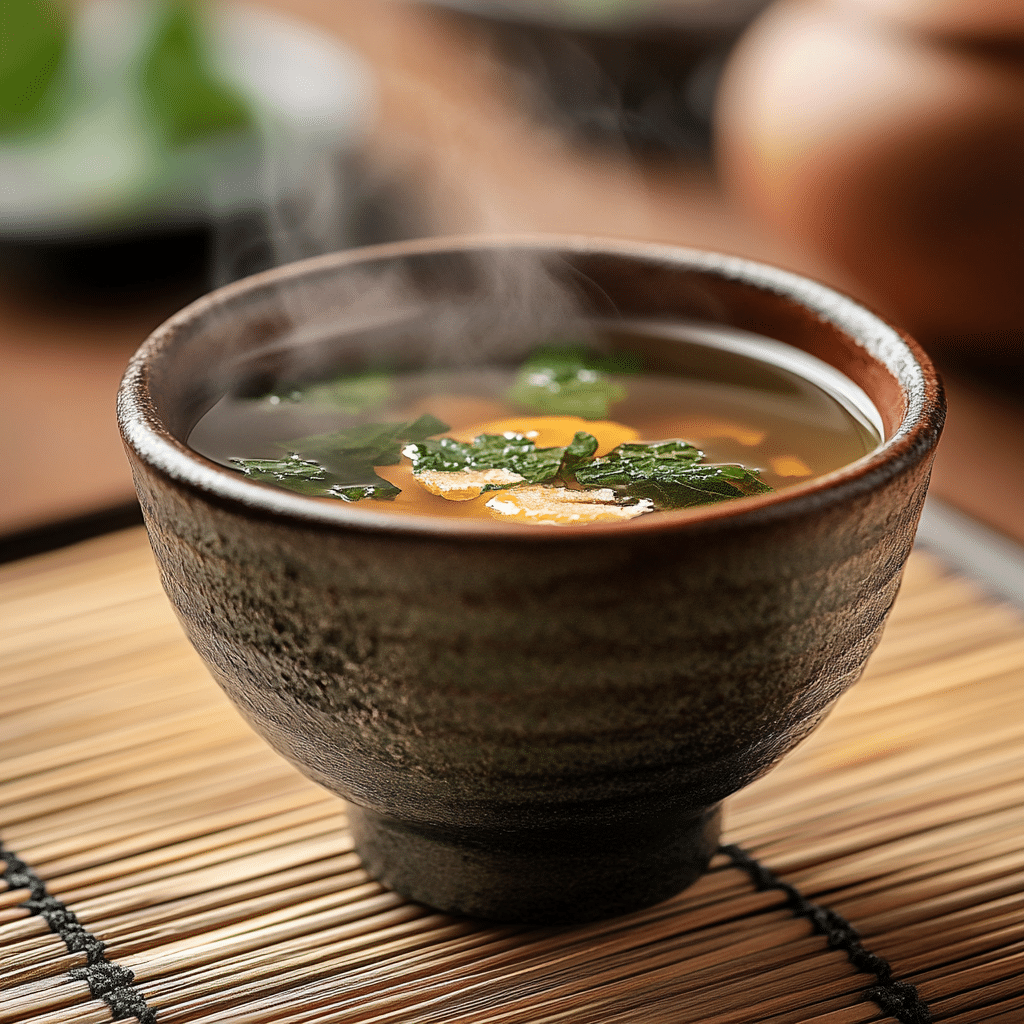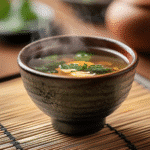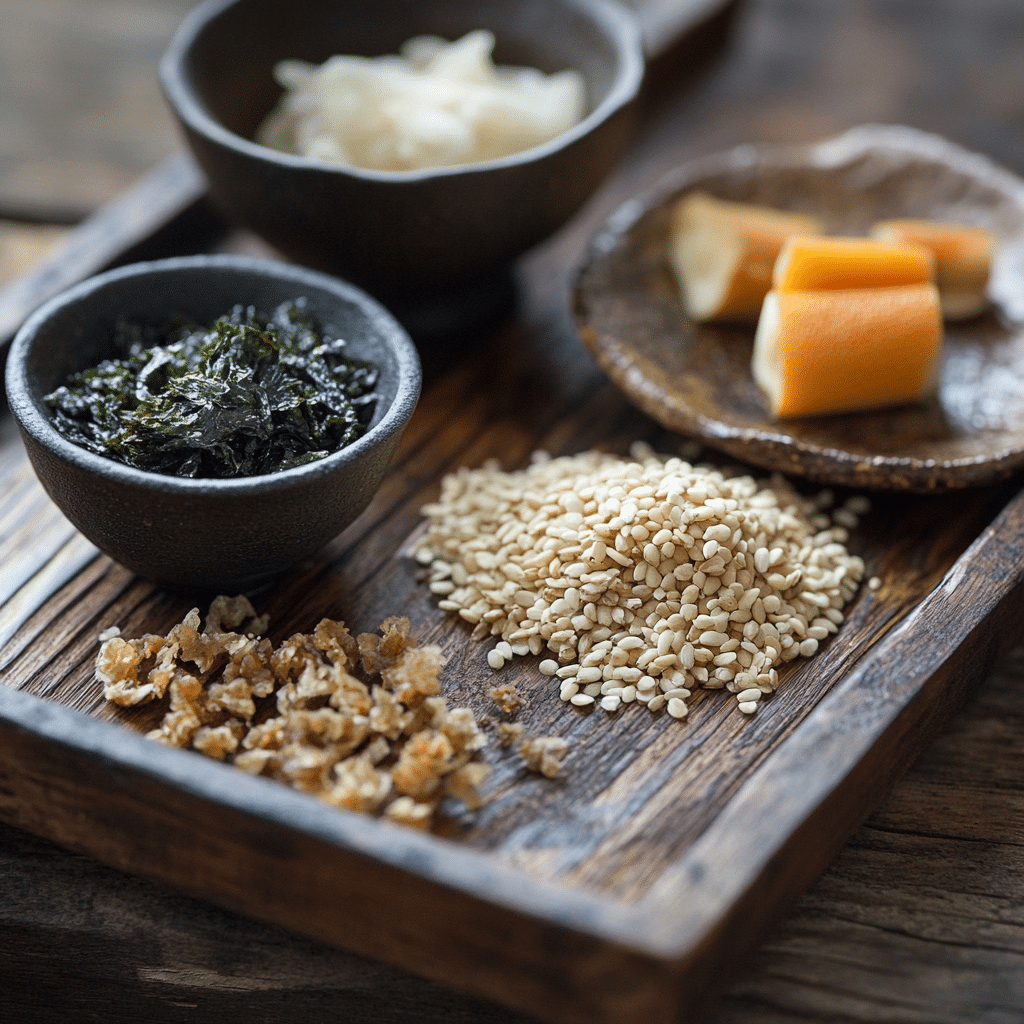Introduction
The Japanese Mounjaro recipe is more than just a soothing cup of tea—it’s a time-honored wellness tradition infused with nature’s purest elements. Steeped in simplicity, detoxifying effects, and deep cultural roots, this herbal blend has captured the attention of health-conscious drinkers and holistic nutrition experts worldwide. But what makes this ancient remedy so special, and why is it gaining popularity today?
In this comprehensive guide, we’ll explore everything you need to know about the Japanese Mounjaro recipe, from its cultural origins to modern tea infusions using local herbs. You’ll learn how to prepare it, what makes it different from the Brazilian version, and which natural alternatives offer similar benefits.
Looking for inspiration? Try this Quick & Easy Recipes collection to pair with your Mounjaro detox routine.

What Is the Japanese Mounjaro Recipe?
The Japanese Mounjaro recipe refers to a traditional, all-natural herbal tea blend designed to promote digestion, immune balance, and gentle detoxification. Though it shares a name with a well-known medication, this version is strictly natural—crafted using mountain herbs, sea vegetables, roasted grains, and citrus peels rooted in Japanese healing practices.
It’s caffeine-free, calming, and antioxidant-rich, making it the perfect daily wellness ritual. Unlike generic herbal teas, the Japanese Mounjaro recipe features native ingredients like kombu (kelp), yomogi (Japanese mugwort), genmai (roasted brown rice), and yuzu zest—offering a complex earthy-citrus flavor profile and therapeutic benefits.
This drink isn’t just a trend—it reflects Japanese principles of balance, seasonal living, and honoring the body through mindful nourishment.
The Origins and Cultural Roots of the Japanese Mounjaro Recipe
Although historical texts may not specifically mention “Mounjaro” by name, similar infusions have been part of Japanese herbal traditions since the Edo period. During this era, monks, mountain herbalists, and Kampo (traditional Japanese medicine) practitioners developed wellness teas to restore energy, reduce inflammation, and promote inner clarity.
In many remote villages, elders passed down their versions of the Japanese Mounjaro recipe through generations. These formulas, often made with ingredients sourced from forests, fields, and coastlines, were refined over centuries and are now making a global comeback as modern drinkers seek clean, natural alternatives for everyday wellness.
Check out The Ultimate Brazilian Mounjaro Recipe to compare how international variations differ in ingredients and preparation.
Whether you’re exploring herbal wellness for the first time or revisiting traditional remedies, this guide to the Japanese Mounjaro recipe offers a perfect blend of cultural insight and practical how-to.
Print
Japanese Mounjaro Recipe: A Traditional Wellness Tea
- Total Time: 20 minutes
Description
Japanese Mounjaro Recipe: A calming, detoxifying tea made with traditional Japanese ingredients like kombu, yomogi, genmai, and yuzu peel. This herbal blend promotes digestion and boosts immunity. Simple to prepare and naturally soothing.
Ingredients
1 tablespoon Kombu (seaweed), rinsed
1 tablespoon Yomogi (mugwort), crushed
1 tablespoon Genmai (roasted brown rice), toasted
1 teaspoon Yuzu peel, fresh or dried
4 cups of water
Optional: Honey or Stevia for sweetness
Instructions
Prepare the Ingredients: If using dried yomogi and yuzu peel, crush or chop them into smaller pieces to release their natural oils. Toast the genmai in a dry pan until lightly browned.
Boil the Water: Bring 4 cups of water to a boil, then lower the heat to a simmer.
Add Ingredients: Add the kombu, yomogi, genmai, and yuzu peel to the pot. Stir gently to combine.
Simmer: Let the mixture simmer for about 10-15 minutes to allow the flavors to blend.Strain and
Serve: After the tea has steeped, strain the liquid into cups or a teapot. Add honey or stevia if you prefer a sweeter taste. Serve hot and enjoy!
- Prep Time: 5 minutes
- Cook Time: 15 minutes
Traditional Japanese Mounjaro Tea Preparation
Authentic Ingredients Used in the Original Recipe
The Japanese Mounjaro recipe combines natural, locally-sourced ingredients known for their health benefits. Here’s a closer look at the key components that make this tea both unique and nutritious:
- Kombu (Sea Kelp): Rich in iodine, Kombu supports thyroid health and boosts the immune system. This seaweed also offers a natural detox effect, purging toxins from the body and helping to maintain healthy skin.
- Yomogi (Mugwort): Known for its digestive properties, Yomogi aids in calming the stomach and reducing bloating. It’s a powerful herb used in traditional remedies to support menstruation and overall health.
- Genmai (Roasted Brown Rice): Adding a nutty flavor to the tea, Genmai is full of antioxidants, fiber, and minerals that support energy production and reduce inflammation.
- Yuzu Peel: This Japanese citrus fruit brings a zesty, refreshing taste to the tea, along with an abundance of vitamin C that boosts the immune system and enhances skin health.
These ingredients, when combined, create a flavorful yet healing tea that promotes balance and wellness. They reflect the Japanese philosophy of using seasonal, local products that are both nourishing and restorative.
Step-by-Step Brewing Guide for Mounjaro Tea
Making authentic Japanese Mounjaro tea is a simple, yet rewarding process. Follow these steps to prepare your own calming brew:
Ingredients:

- 1 tablespoon of Kombu (seaweed), rinsed
- 1 tablespoon of Yomogi (dried mugwort), crushed
- 1 tablespoon of Genmai (roasted brown rice), toasted
- 1 teaspoon of Yuzu peel, fresh or dried
- 4 cups of water
Instructions:
- Prepare the Ingredients: If you’re using dried Yomogi and Yuzu peel, crush or chop them into smaller pieces to release their natural oils. Toast the Genmai lightly in a dry pan to bring out its nutty flavor.
- Boil the Water: In a medium-sized saucepan, bring the water to a boil. Once boiling, reduce the heat to a simmer.
- Add the Ingredients: Add all the ingredients—Kombu, Yomogi, Genmai, and Yuzu peel—into the pot with the simmering water. Stir gently to mix them together.
- Simmer: Let the tea simmer for about 10-15 minutes, allowing the flavors to fully infuse. The Kombu will release a slightly savory umami flavor, while the Yomogi and Yuzu will add their characteristic herbal and citrus notes.
- Strain and Serve: After the tea has steeped, strain the liquid into a teapot or directly into cups. Enjoy the fresh, aromatic flavors of this nourishing drink!
For a more potent brew, you can let the tea steep for a longer time or adjust the ingredients based on your taste preferences.
Modern Japanese Mounjaro Recipe Variations
Contemporary Blends Using Local Japanese Herbs
While the traditional Japanese Mounjaro recipe uses simple ingredients, modern versions often include additional Japanese herbs to enhance flavor and health benefits. Here are a few popular variations:
- Matcha: Adds antioxidants and a gentle energy boost without the jitters. A vibrant green addition to the tea.
- Ginger: Known for its digestive and anti-inflammatory properties, ginger adds a warm, spicy kick.
- Shiso: A refreshing Japanese basil with antioxidants and cooling effects, perfect for hot days.
- Umeboshi: Pickled plum, known for its alkalizing properties and digestive support, can also be added to Mounjaro.
These modern twists add complexity and variety to the traditional tea while maintaining its health benefits.
Popular Mounjaro Infusions (Matcha, Ginger, Yuzu, etc.)
Here are some common infusions:
- Matcha & Yuzu: A refreshing and energizing combo, combining matcha’s richness with yuzu’s citrusy zing.
- Ginger & Kombu: A warming infusion that’s great for digestion and circulation.
- Shiso & Yomogi: A cooling, herbal infusion that helps with bloating and promotes clear skin.
These variations allow you to enjoy the wellness benefits of Japanese Mounjaro while exploring new flavors.
Natural Alternatives to Mounjaro
Japanese Herbal Teas with Similar Effects
While Japanese Mounjaro recipe is beloved for its health benefits, several other Japanese herbal teas offer similar effects. If you’re looking for alternatives, here are some popular options:
- Sencha: A green tea with mild caffeine content and powerful antioxidants, Sencha is great for boosting metabolism and improving skin health.
- Hojicha: A roasted green tea, low in caffeine, with a deep, smoky flavor. Hojicha is excellent for digestion and is often enjoyed after meals.
- Kukicha: Made from tea stems, Kukicha is a caffeine-free option rich in minerals that supports detoxification and stress relief.
These alternatives provide similar benefits to Mounjaro, such as digestive support, detoxification, and immune boosting, while offering unique flavors and aromas.
How These Alternatives Compare to Mounjaro
Though Mounjaro stands out for its distinctive combination of ingredients, these alternatives also offer a range of wellness benefits. The main difference lies in flavor profiles and caffeine content. Mounjaro is particularly valued for its all-natural, caffeine-free blend, while Sencha and Hojicha may provide a slight energy boost thanks to their moderate caffeine levels.
If you prefer a milder, caffeine-free option, Mounjaro remains a top choice. But for those who enjoy a bit of caffeine and a fresh taste, these herbal alternatives can also be great options for daily wellness.
Where to Find or Buy Japanese Mounjaro Ingredients
Online vs. Local Japanese Markets
You can easily find Japanese Mounjaro recipe ingredients both online and locally:
- Online Stores: Websites like Amazon or specialty tea shops offer kombu, yomogi, genmai, and yuzu peel.
- Local Japanese Markets: Larger cities with Japanese supermarkets usually carry fresh kombu, yuzu, and other Mounjaro essentials.
- Health Food Stores: Some stores may offer dried yomogi and roasted rice in their Asian food sections.
How to Source High-Quality Ingredients
For the best Mounjaro tea, choose:
- Organic herbs and grains for a richer flavor.
- Fresh ingredients like yuzu peel and kombu for a better aroma.
- Trusted suppliers to ensure authenticity.
Common Mistakes and Tips When Making Mounjaro
Why Your Tea Might Not Taste Right
While Japanese Mounjaro recipe is simple to make, there are a few common mistakes that can affect its flavor:
- Too much kombu: Using excessive kombu can make the tea too salty or overpowering. A small amount is enough to give the tea a subtle umami flavor.
- Over-steeping: Steeping the tea for too long can make it bitter, especially with ingredients like yomogi and roasted rice. Stick to the recommended steeping time (10-15 minutes).
- Not straining properly: Ensure you strain the herbs well to avoid any grainy or herbaceous bits floating in your tea.
Tips for Perfecting Aroma and Potency
- Use fresh ingredients: Fresh kombu, yuzu peel, and mugwort will yield better flavor and aroma.
- Adjust sweetness: Mounjaro is naturally mild, but you can add a little honey or stevia for extra sweetness if desired.
- Experiment with infusions: For a stronger flavor, try adding matcha or ginger to your brew.
Japanese Mounjaro vs Brazilian Mounjaro: What’s the Difference?
Key Flavor, Ingredient, and Health Differences
Both the Japanese Mounjaro recipe and Brazilian Mounjaro share detoxifying properties but differ in their ingredients, flavor profiles, and health benefits.
- Japanese Mounjaro Recipe: The traditional Japanese Mounjaro recipe uses ingredients like kombu (seaweed), yomogi (mugwort), genmai (roasted brown rice), and yuzu peel. These elements create an earthy, slightly citrusy tea that’s perfect for detoxification, digestion, and soothing the body.
- Brazilian Mounjaro: Brazilian versions typically feature yerba mate, hibiscus, and other regional herbs. The result is a more floral and fruity tea, with the energizing effects of yerba mate due to its caffeine content. Brazilian Mounjaro is often seen as an invigorating drink, unlike the calming effects of the Japanese Mounjaro recipe.
Both versions of Mounjaro offer health benefits, but the Japanese Mounjaro recipe focuses on digestion, detoxification, and relaxation, while the Brazilian version provides an energy boost and a lighter flavor profile.
Which Version Is Better for Wellness and Taste?
If you are looking for a Japanese Mounjaro recipe that offers a gentle, caffeine-free detox with digestive support, the traditional Japanese version is ideal. With its earthy flavors and health benefits, it’s a perfect tea for winding down and supporting long-term wellness.
On the other hand, if you want an energizing tea that offers a more invigorating experience, the Brazilian Mounjaro might be more your style. But for those focused on natural healing and relaxation, the Japanese Mounjaro recipe reigns supreme with its holistic benefits.
FAQs about Japanese Mounjaro Recipe
How do you make Japanese Mounjaro?
To make Japanese Mounjaro, you need a few simple yet powerful ingredients. Combine kombu (seaweed), yomogi (mugwort), genmai (roasted brown rice), and yuzu peel. Add these ingredients to water, bring to a simmer for 10-15 minutes, and strain the tea into a cup. Enjoy this soothing, detoxifying drink that promotes digestion and overall wellness.
What is a natural alternative to Mounjaro?
If you’re looking for a natural alternative to Japanese Mounjaro, consider teas like sencha, hojicha, or kukicha. These herbal options provide similar benefits, such as digestive support and detoxification, while offering different flavor profiles. Yerba mate and hibiscus tea are also good alternatives for a boost in energy and antioxidants.
What is Japanese Mounjaro tea?
Japanese Mounjaro tea is a traditional, all-natural beverage made from a blend of herbs and grains, such as kombu, yomogi, genmai, and yuzu peel. It’s known for its calming, detoxifying, and digestive benefits. This herbal tea has a unique flavor profile, combining earthy, herbal, and citrusy notes, making it a perfect addition to a wellness routine.
What ingredients are in Mounjaro?
The key ingredients in Japanese Mounjaro are:
Kombu (seaweed): Rich in iodine, supports thyroid health and detoxification.
Yomogi (mugwort): Known for its digestive and anti-inflammatory properties.
Genmai (roasted brown rice): Adds a nutty flavor and helps with digestion and reducing inflammation.
Yuzu peel: A citrus element high in Vitamin C, supporting the immune system.
Conclusion: Why You Should Try the Japanese Mounjaro Recipe Today
The Japanese Mounjaro recipe is a perfect blend of tradition and wellness, offering a soothing, detoxifying experience with every sip. With its natural ingredients like kombu, yomogi, and yuzu peel, this tea supports digestion, boosts immunity, and helps cleanse the body. Whether you prefer the original recipe or experiment with modern infusions, Mounjaro remains a timeless choice for those seeking a holistic approach to health.
